What is MAP Protocol? MAP Protocol is Bitcoin’s layer 2 peer-to-peer omnichain infrastructure built on light clients and ZK technology focusing on cross-chain interoperability. So what is MAP Protocol and what are its outstanding mechanisms? Let’s find out with Weakhand in this article.
To better understand what MAP Protocol is, people can refer to some of the articles below:
- What is Omnichain? Shared Vision of LayerZero, Chainlink & Circle
- What is Bitcoin? All About Bitcoin
- What is BRC 20? All You Need To Know About BRC 20
Overview of MAP Protocol
What is MAP Protocol?
MAP Protocol is Bitcoin’s layer 2 peer-to-peer omnichain infrastructure built on light clients and ZK technology focusing on cross-chain interoperability. The project provides an omnichain smart contract development platform for dApps and interoperability for the Bitcoin ecosystem.
In May 2023, with the proposal and boom of BRC-20, an experimental, alternative token standard for Bitcoin, users are paying closer attention to the future of interoperability of the Bitcoin ecosystem. From there, it opens up needs such as bridging assets on other blockchains to the Bitcoin network. Therefore, MAP Protocol was born with the core goal of solving the above needs, while enriching the Bitcoin ecosystem.
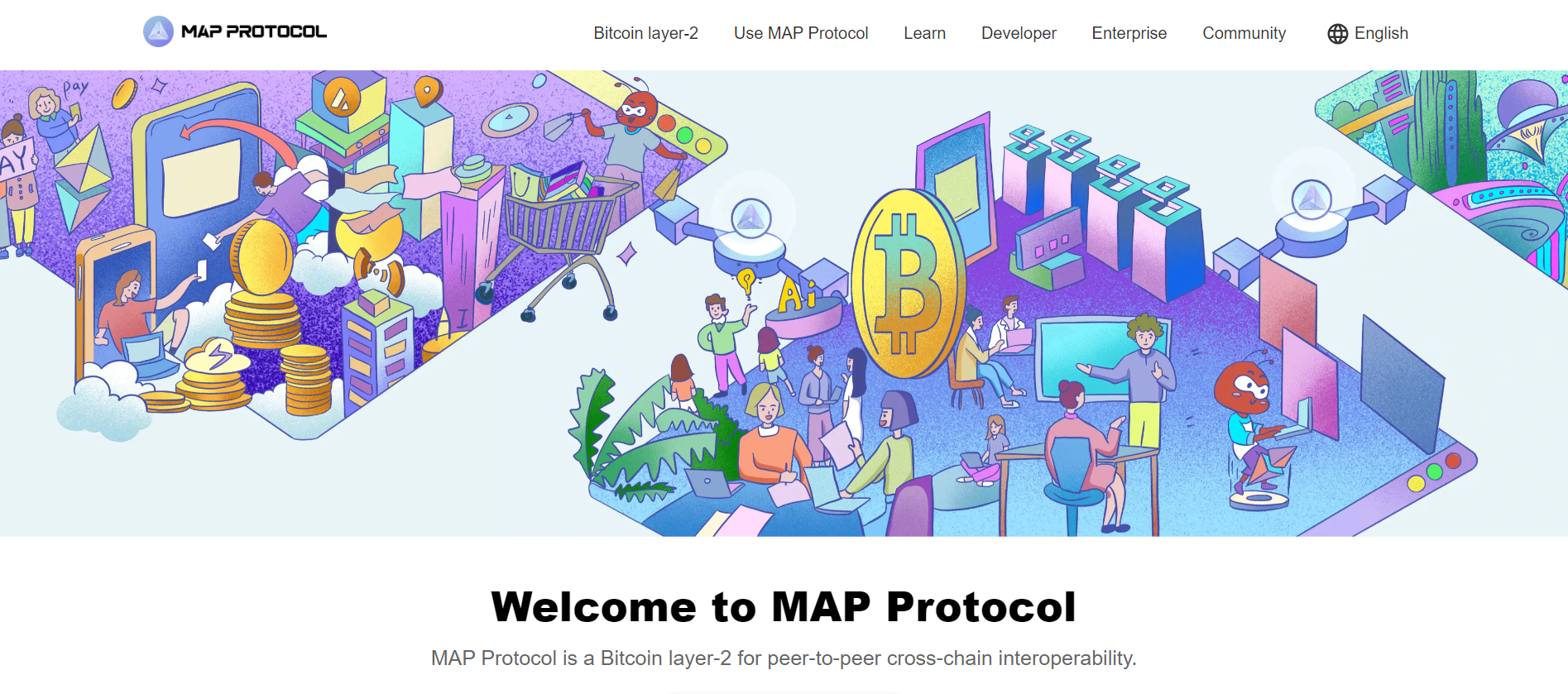
What is MAP Protocol?
MAP Protocol makes navigating Web3 intuitive. In the protocol, users simply know that they have full ownership of their assets. When they transfer assets from one blockchain to another, it is completely peer-to-peer, and no third party can interfere.
According to statistics, there have been more than 150 Smart Contracts and nearly 5 million transactions with an asset volume of about 350 million USD deployed on MAP Protocol.
Components and operating mechanism of MAP Protocol
Light Clients are a shortened version of full nodes, they do not download the entire blockchain but rely on a portion of the data to validate transactions. This is made possible thanks to the principles of cryptographic hash functions and Merkle proofs, which allow Light Clients to verify the authenticity of transaction data and block headers with a minimal amount of information.
To ensure the overall flexibility and robustness of the omnichain infrastructure, the MAP Protocol’s technical architecture is divided into three layers: protocol layer, service layer Omnichain MAP (MOS) and application layer.
1. MAP Protocol layer
This is the bottom layer of the MAP Protocol, responsible for verifying and ensuring cross-chain transactions are performed in a peer-to-peer manner. It is the core of the MAP Protocol, which includes the MAP Relay Chain, Miantianer, and ZK-optimized light clients.
- MAP Relay Chain: is a blockchain with Proof of Stake (PoS) mechanism implements the Istanbul Byzantine Fault Tolerance (IBFT) consensus algorithm, which allows a group of Nodes to authenticate signed messages between them in a series of steps, even when up to 1/3 of all Nodes are offline , defective or malicious. The function of MAP Relay Chain is to compile different algorithms and hash functions of other Blockchains to synchronize data. For example, ETH uses a different algorithm than NEAR, MAP Relay Chain is responsible for making these algorithms consistent in order to enter the transaction state.
- Maintainer: is an off-chain team responsible for updating the latest blocks and Merkle tree proofs from the consensus layer of the original blockchain to the Light Client Smart Contract deployed on the target Blockchain. Even though Maintainer is off-chain, vulnerability attacks on it will be ineffective.
- ZK-Improved Light Clients: Aims to optimize Cross-chain verifications in terms of block headers and Merkle proof verification when a specific event is pre-released in a specific new block. For example, in Bitcoin, at block 840,000, the having event will take place.
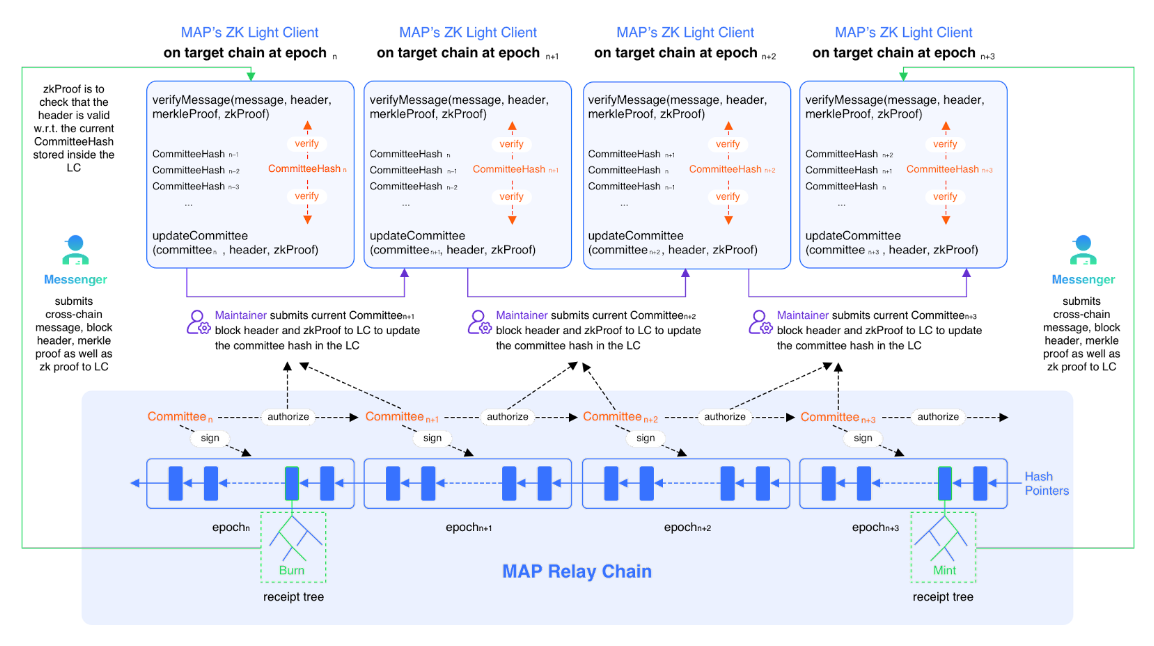
Improved Light Clients MAP Relay Chain application deployment using zkSNARK technology to solve two problems:
- Reduce the amount of MAP Relay Chain data that needs to be stored in Smart Contracts, reducing gas costs to update the state of Light Clients.
- Move the signature validity check and signature weight part of the block header verification process into a zero-knowledge circuit to reduce network transaction fees for users.
2. Service layer Omnichain MAP (MOS)
The MOS layer includes Messenger, Vault & Data, and other cross-chain messaging components.
Messenger is an independent inter-chain program. It listens to relevant events built into the program and builds evidence on the source chain’s ledger, then transmits event notifications and evidence to Vault or Data on the target blockchain.
Additionally, Messenger prepays gas fees in MAP Relay Chain and Target Blockchain to users. NBut since it is not possible to estimate gas fees for the target Blockchain, Messenger rewards will be provided by dApps. The versatility of the application gives Messenger many possibilities. Applications collect customizable transaction fees from omnichain users, thereby rewarding Messenger. As the main component of MOS, Messenger SDK is completely Open Source for dApp developers.
Besides, Messenger is also an inter-chain program with high concurrency. Theoretically, as long as a certain Messenger is active between blockchains, all dApp cross-chain transaction messages can be transferred. Malicious attacks from Messenger will not result in loss of assets, but instead they will cause MAP Protocol Crosschain verification at the protocol layer to fail.
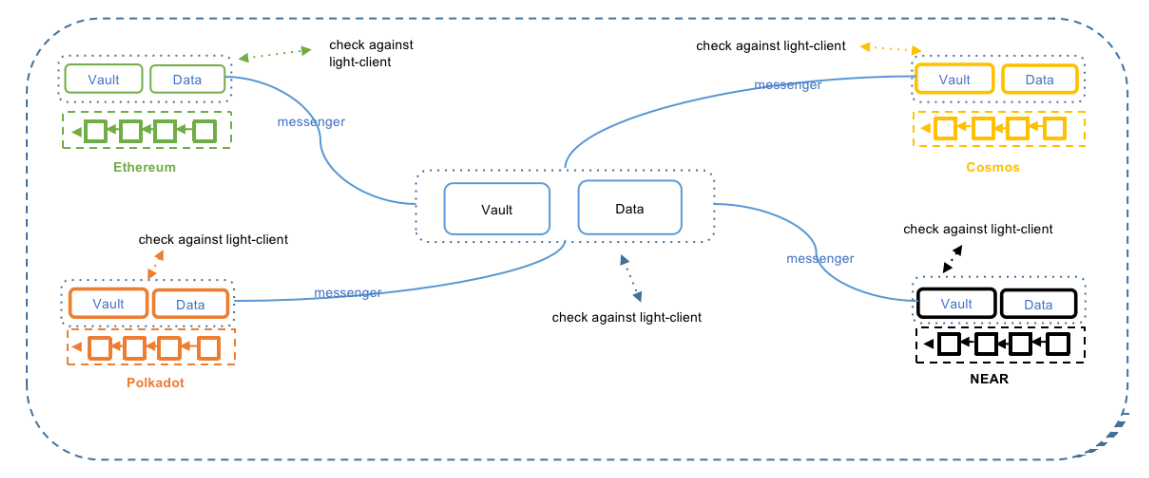
Vault & Data is located in the source chainContract Vault & Data is responsible for receiving content or data and triggering events for Messenger to listen for. On the Asset Transfer Blockchain or Target Blockchain, Contract Vault & Data is responsible for receiving Cross-chain messages sent by Messenger and forwarding requests to Light Clients of the source chain deployed on the Blockchain that need to transfer assets or receive assets. product. Once verification is complete, Vault and Data will execute their respective instructions.
3. Application layer MAP Protocol
Communication between assets on different cross-chains takes place at the dApp omnichain application layer. Detail:
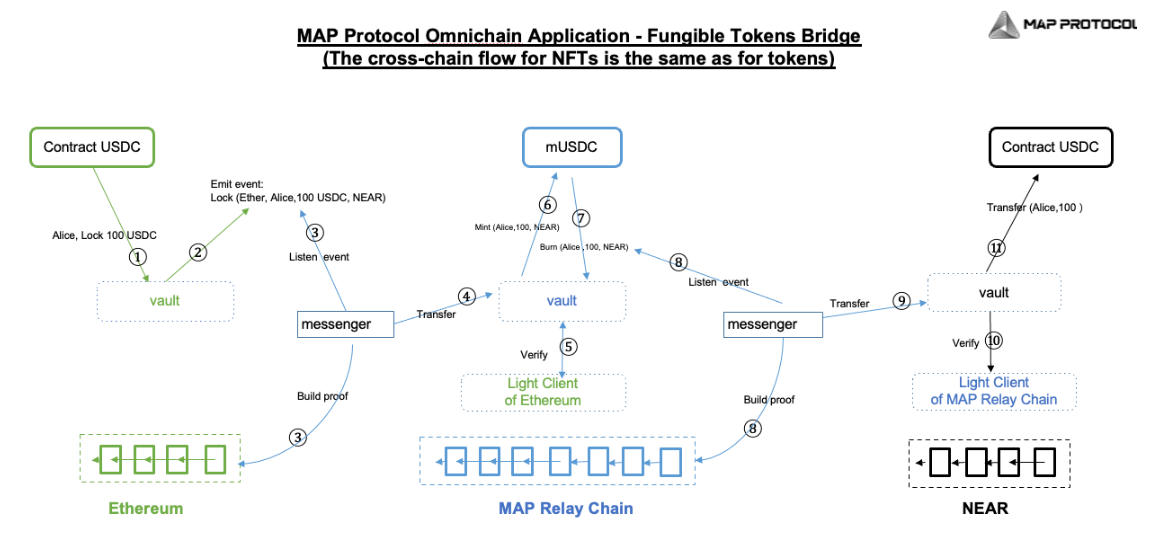
- Cross-chain Vault smart contract (MOS component) receives assets.
- The Vault smart contract sends information containing the original Blockchain address, target chain address, token type and amount to Messenger.
- Upon detecting this event and authenticating it, Messenger needs to build proof that this event was recorded on the original Blockchain. Messenger forwards this request to the Relay Blockchain’s Vault contract.
- The Vault contract transfers the validation of this request to the Light Clients smart contract deployed on the relay Blockchain from the original Blockchain.
- Light Clients smart contracts store Block header information and can verify whether the transaction actually occurred on the original Blockchain.
- The Vault (mint) contract creates an equivalent amount of assets in the forward Blockchain version of the Cross-chain claim asset.
- HThe Vault contract destroys Mint assets. Steps 6 and 7 are for bookkeeping (data entry) on the relay blockchain, so the assets will be minted and then destroyed.
- Messenger listens for events on the Relay Blockchain and builds proof that this transaction is recorded on the Relay Blockchain.
- Messenger will then forward the message to the Target Blockchain’s Vault contract.
- The Vault contract sends Crosschain requests to the Relay Blockchain’s Light Clients smart contract and is deployed on the target blockchain for verification.
- Upon receiving instructions to pass verification by Light Clients, the Vault contract will release tokens to the destination Blockchain address specified by the original Blockchain smart contract.
Special point of MAP Protocol
The outstanding advantages of MAP Protocol must include:
- Simple Light Client: They consume less bandwidth and storage space, making blockchain accessible to devices with limited capabilities. Along with that comes much faster speeds due to reduced data requirements.
- Decentralization: By allowing more users to participate in the network without running full Nodes, simple clients contribute to the decentralized nature of the blockchain.
- Unlocking the Future of the Bitcoin Ecosystem: With MAP Protocol’s BRC-201, a Cross-chain scaling protocol for BRC-20 tokens, BRC-20 and ORC-20 assets on the Bitcoin network can interact with other tokens on other Blockchains.
- Exploiting the potential of Web3: Through MAP Protocol, developers can seamlessly integrate different blockchain components, allowing to build the most amazing Web3 applications.
- Empowering Gamers: Through MAP Protocol, GameFi projects can transact and interact across all Blockchains. From there, many utilities and benefits for players open up.
- Cross-Chain technology is easy and economical: Leveraging the outstanding capabilities of Zero-Knowledge (ZK) technology, MAP Protocol brings unprecedented flexibility to users while still ensuring safety and efficiency.
- Optimize time and money: Using MAP Protocol to become omnichain will help projects and developers minimize costs.
Development Roadmap
Update…
Core Team
Update…
Investor

- On December 7, 2023, the project successfully called for an undisclosed amount of capital by two funds DWF Labs and Waterdrip Capital.
Tokenomics
Basic information about MAP token
Token Allocation
The total supply of MAP is distributed as follows:
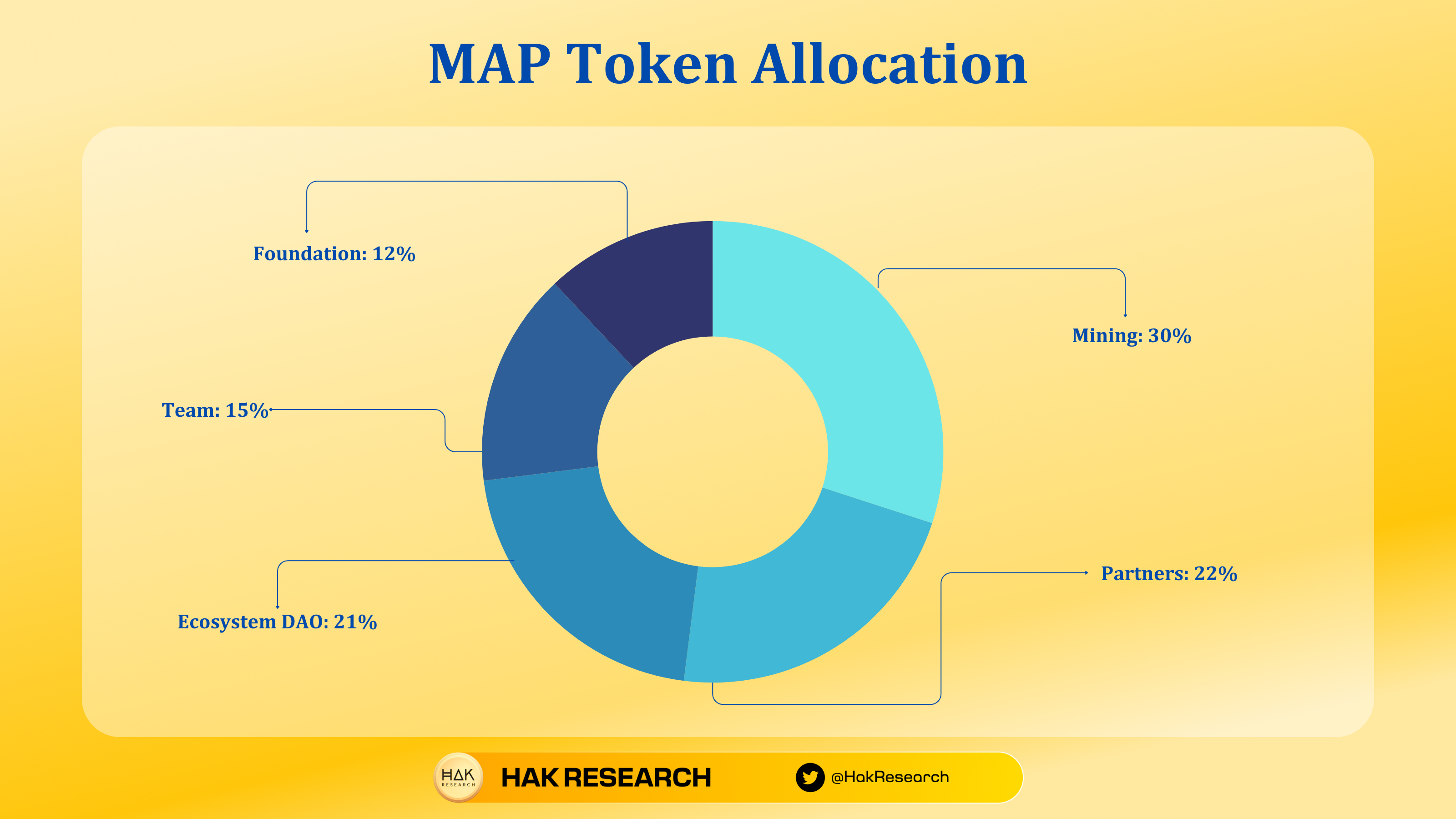
Token Release
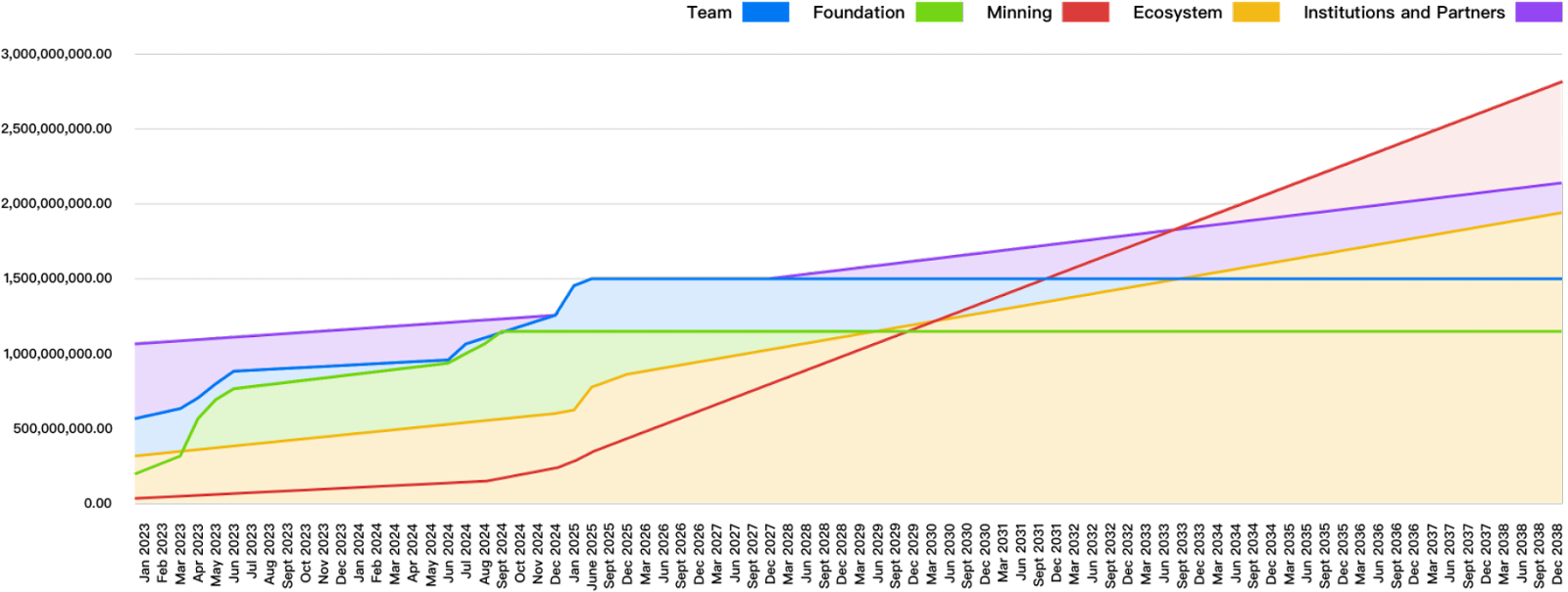
Token Use Cases
Exchanges
Currently MAP is available on exchanges: HTX, Kucoin, UniSwap, MEXC, CoinOne.
MAP Protocol Information Channel
Summary
MAP Protocol is Layer 2 of Bitcoin with an omnichain infrastructure platform using advanced ZK technology. With BRC-20 in particular and the Bitcoin network in general, there have been improvements and developments in the ecosystem. It can be said that this is a quite necessary protocol if you want to expand the interoperability of Cross-chain assets. Hopefully through this article everyone can understand what MAP Protocol is.


